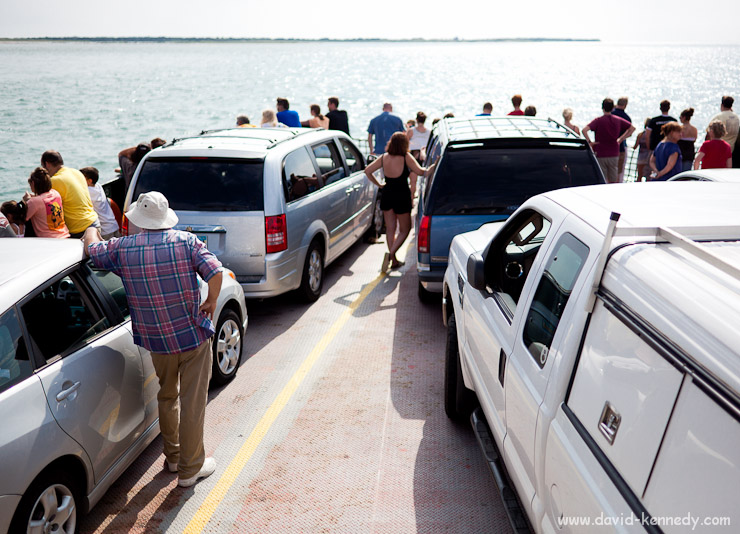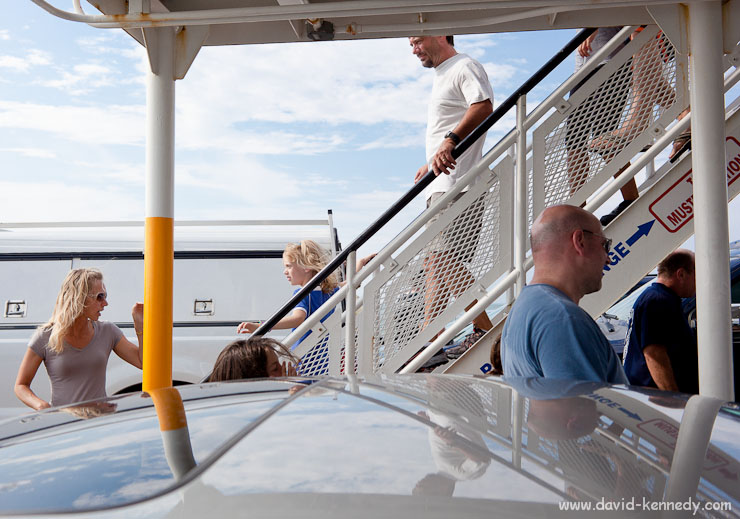
Together with Elizabeth’s family I spent a week in the Outer Banks of North Carolina in mid-August. While I had high hopes of making landscapes of the coastline and the Cape Hatteras Light Station, it didn’t quite work out. Combining a family vacation with photography is clearly an art that my parents somehow perfected, but I will have to learn to do myself.
That said, I was able to do a fair number of pictorials, particularly on the car ferry that took us from Hatteras to the island of Ocracoke. I had rented a Zeiss Distagon T* 35mm f/2 ZE (Canon-mount) lens for this trip, and while I didn’t use it as much as I had hoped, I did make enough to get a general impression of how the lens handles and renders its subjects on the sensor. What I was looking for in my photographs was the “Zeiss look,” defined by strong micro-contrast and subjects that want to pop out of the frame (read: three-dimensional). I’m not convinced that I found this look in every frame that I made with this lens, but it was there in several of them. Having experimented with the Canon 35mm f/1.4L a few months ago, I was curious how my experience would differ.

I will say that the Zeiss lens is demonstrably sharper than the 35mm f/1.4L–the edges hold together better, and even the center is much sharper. I believe the online rumors that the 35mm f/1.4 is due for replacement and that Canon surely is working on a successor; after all, the 24mm was re-staged with a Mark II designation not that long ago, and with the increase in resolution from the cameras coming down the pike, the 35mm is going to demonstrate too well that it is an older lens design. That said, the “effect” that these lenses provide is similar–strong vignetting so that the subject of the photo really “pops” when shot wide-open.
While I am still in the process of going through my images from the trip, as well as evaluating two lenses from Canon (the 135mm f/2L and the 14mm f/2.8L II), I would tentatively say that I give the nod to the Zeiss lens over the Canon 35mm because while they do produce similar effects, the sharpness and control of chromatic aberration with the Zeiss is overwhelming to the eyes. But, the Canon lens has autofocus (the Zeiss being manual focus only) and is a full stop faster, so anyone trying to decide between the two should keep those details in mind.
More to come.